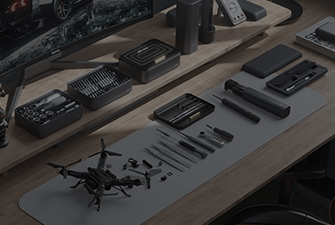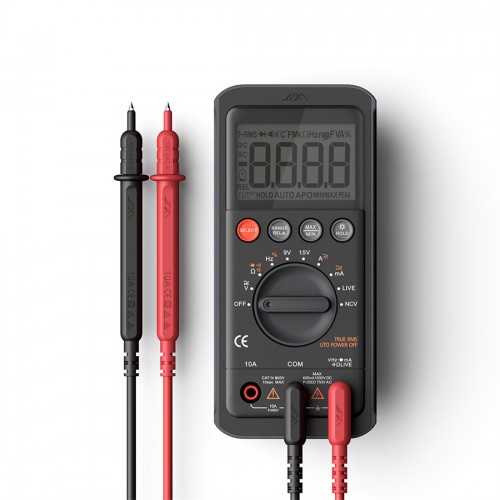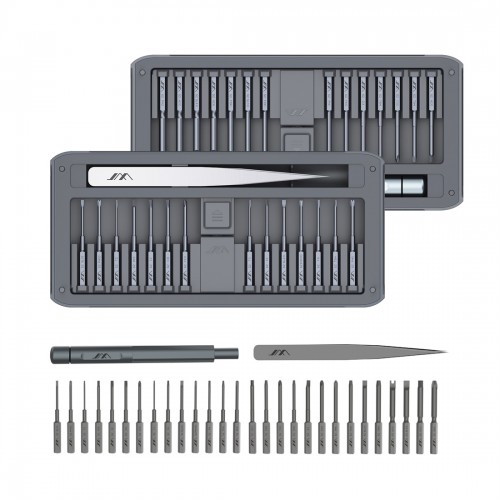digitally-enhanced product cordless tools with professional grade parts for on-site repair

A complete toolbox is a maker's top resource for basic jobs such as gauging material to fastening screws accurately. This manual provides expertise to choose proper tools and employ them well.
- Initiate your toolkit by collecting essential hand tools like a hammer, screwdrivers, wrenches, pliers, saws, and tapes.
- Familiarize yourself with the functionality of each tool and its specific applications.
- Polish your approach by working on hands-on tasks and boosting complexity over time.
Remember that practicing with hand tools increases your craftsmanship. With proper knowledge, they will become valuable extensions of your abilities, allowing you to accomplish even the most demanding projects with confidence and precision.
Boost Project Efficiency with Power Tools
Keen to revolutionize tasks? Dive into strong tools that marry precision and operational speed. These critical tools can upgrade your craft for both experienced workers and hobbyists. From durable drills to accurate saws, power tools provide a variety of functions for construction tasks.
- Employ cordless impact drivers for fast and effortless fastening and demo activities.
- Gain skill with reciprocating saws to quickly cut wood, metal and similar materials.
- Upgrade woodworking techniques with efficient planers and jointers for refined finishing.
Apply power tools to accelerate schedules and attain impressive project finishes.
Accuracy Simplified
In a world where detail reigns supreme, the right measuring tools can make all the difference. From basic rulers to advanced laser levels, indispensable instruments help realize designs with exact precision. Whether you're a seasoned craftsman or a budding hobbyist, mastering the use of these essential tools can unlock a world of possibilities.
- Investigate the wide selection of measuring devices catering to varied needs.
- Grasp the distinct uses and merits of each measurement instrument.
- Advance your capability in precise measurement and practical usage.
Complete Sets for All Tasks
From pros to hobbyists, a correct toolkit makes all the difference in projects. Whether fastening screws or building furniture, the right set enhances precision, speed and safety. To find the ideal match for your needs, consider the type of tasks you'll be performing most frequently.
Decide between a full-range set and a dedicated specialized toolkit? With your needs defined, review brands to compare features, performance and pricing. Be sure to consult user reviews online for practical feedback prior to purchase.
With focused research and preparation you'll locate the right set to accomplish projects reliably.
Hand Tool Maintenance: Keeping Your Gear in Top Shape
Maintaining proper care of hand tools matters for every woodworker or DIYer. Failing to care for tools results in dullness, breakage and poor work quality. Routine care helps tools stay in prime condition for long-term reliable use. Begin with wiping and cleaning tools post-use to clear grime and particles. Shelter tools in dry storage to minimize rust and corrosive damage.
- Re-edge cutting edges periodically using a stone or appropriate file.
- Lubricate mechanisms with fitting oil to reduce friction and prolong service life.
- Inspect grips routinely for wear and substitute damaged handles as necessary.

Adhering to these maintenance practices will lengthen the lifespan of tools and enhance your workflow.
Fundamental Hand Tools for Your Workshop
A well-stocked home workshop provides a perfect space for hobbyists and makers. Specialist tools add value but foundational hand tools are critical for diverse projects. Vital tools include a solid hammer, an adaptable wrench and a trustworthy tape measure for accurate gauges. Ensure you carry assorted screwdrivers, pliers for twisting and a utility blade for cutting substances. A quality saw provides precise cutting and a level keeps work aligned and even.
- Must-Have Home Workshop Tools

Comprehensive Guide to Power Tool Safety
Power tools are high-powered tools that yield considerable efficiency and force. But these tools insist on careful adherence to safety guidelines. Overlooking protection protocols can cause dangerous injuries. This compendium explains power tool safety, offering knowledge to ensure secure operation.
Start by reviewing your tools' manuals carefully and understanding distinct safety aspects. Continually use appropriate protective equipment including glasses, ear defenders and gloves. Carry out routine maintenance to keep tools functioning properly.
Always remember safety is the foremost concern in workshops. Applying these safety measures allows you to work with power tools safely and confidently.
Picking Precision Tools for Accurate Measuring
For dependable measurements, the tool selection you make is vitally significant. A variety of measuring instruments are available, each designed for specific purposes. Insight into each tool's attributes is key to choosing properly. Review aspects such as precision, resolution and scale when selecting measurement instruments.
- To obtain accurate length readings, a tape or ruler is typically appropriate.
- To determine angles correctly, rely on a protractor.
- Electronic calipers work well for tiny measurements.
Choosing measurement tools prudently yields repeatable, reliable accuracy.
Selecting Your Ideal Ultimate Tool Set

Deciding on a tool set can feel both thrilling and a little daunting. An extensive range of choices can produce selection fatigue. This in-depth guide arms you with knowledge to choose an optimal tool set.
Start by reflecting on the types of tasks you will do most frequently. Do you have professional experience or are you starting out? Clearly stating goals focuses choices.
- Blend both tool types where appropriate to maximize productivity and precision Don't be afraid to combine blend utilize both power and hand tools for a successful productive efficient outcome Combine hand and power tools strategically Tool Sets for successful and efficient project completion
- Focus on prioritizing fundamental tools
- A sturdy hammer or mallet including a sledgehammer
- Screwdriver, wrench and plier assortments are indispensable versatile items
- Measuring essentials: tape or ruler
- Level, plumb bob or transit for alignment
Additional factors to weigh are tool materials, budget limits and brand standing. Understand that choosing sturdy tools is an investment over time.
Tackle Your Projects with Confidence: Mastering DIY Tools
Beginning DIY ventures often feels daunting. However, with correct tools and basic knowledge, even hard tasks become achievable. Begin by studying and understanding your tools. Read instructions thoroughly and test basic operations safely. Always hold safety as the chief priority. Use protective equipment such as goggles, gloves and ear protection to guard against hazards.
When picking tools, emphasize long-lasting quality and robustness. Invest in reliable dependable trustworthy brands that will stand the test of time last for years serve you well.
Turn to professionals or veteran DIYers at hardware stores for helpful advice. They can supply helpful advice and insights when evaluating suitable tools for projects.
- A maintained sharp edge equals safer tool use—keep blades honed.
- Organize and store tools to prevent damage and ensure longevity.
- Expand your skills and knowledge through DIY
When to Opt for Power Tools or Hand Tools
For a project, deciding between power and hand tools might feel like a tough dilemma. While powerful power tools maximize speed and output, classic hand tools are indispensable for precise and minor work. Here's a breakdown guide to help you select choose pick the right option tool equipment for the job.
- Hand tools excel in precise tasks like carving, assembly and nuanced repairs. Hand tools commonly offer better control and are more economical options.
- Power tools are ideal for rapid, effective operations like sawing, drilling and sanding broad surfaces. They significantly lower manual labor and shorten project timelines.
At the end, the optimal choice depends on project needs, user skill and cost considerations. Use both hand and power tools together when suitable for optimal, efficient results.
